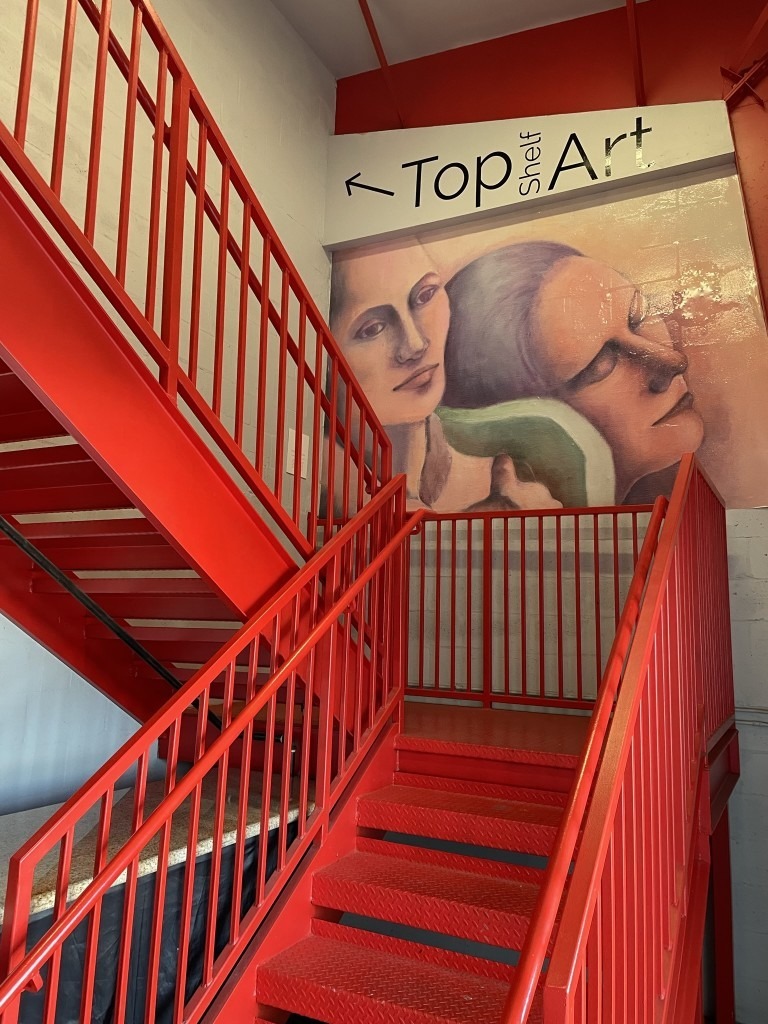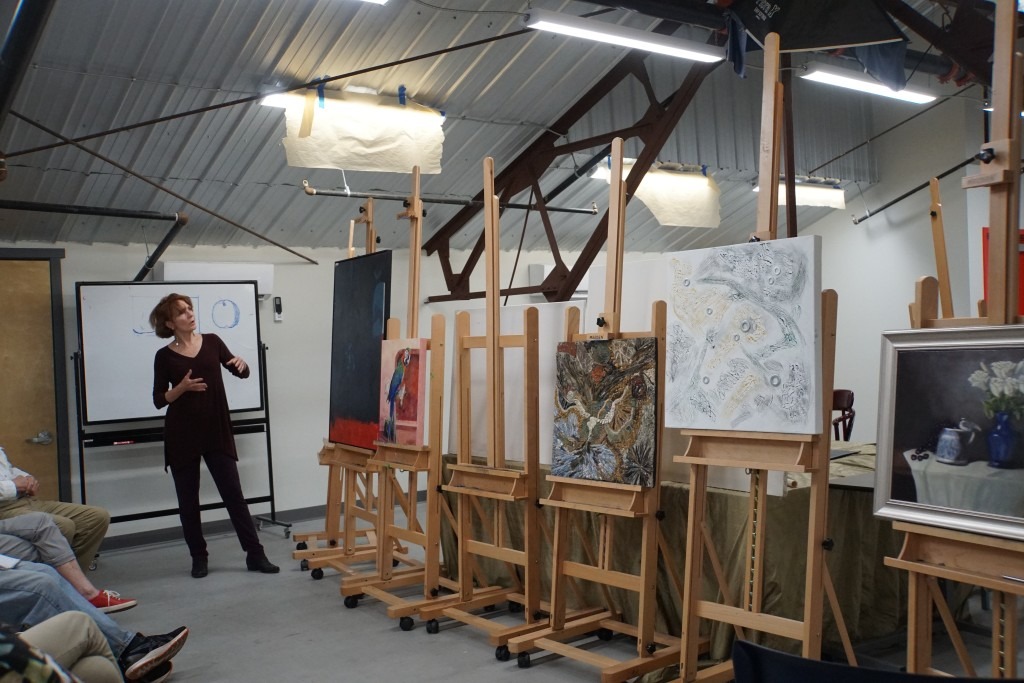Encourages Visual Artists
to View Their Work from all Angles
. . .
One of the most popular art sayings is, “There’s no right or wrong in art.” The combination of words is so old, and by now so cliché, that I couldn’t tell you its origins. If art had proverbs, we’d call it a proverb.
It’s true – there’s no wrong in art. But there is such a thing as bad art. It’s not wrong – it’s just not inspiring.
This reminds me of something Warehouse Arts District Association (WADA) board president Mark Aeling told me in a March 2023 interview, “The role of art is to make you feel connected to something greater than yourself. It’s that common thread of humanity. It’s the thing that binds us all together and connects us to the energy of the universe.
“We have that instinctual drive, and good art does that — it makes you feel connected.”
How do we create a piece of art that connects with viewers? The answer lies in critique.
Thanks to WADA, painter Carol Dameron now provides such critique at the ArtsXchange in St. Pete. The critique session, held on the third Thursday of each month, aims to raise the bar for visual art made in Pinellas County.

Dameron is a classically-trained painter – she studied at Sophie Newcomb College at Tulane University in New Orleans, the Louvre Museum, and The Centre Americain in Paris. Through this, she walked away with a solid knowledge of art history and technique, which is why WADA’s education committee invited her to conduct these monthly critiques.
In a town full of self-taught artists, guidance from people like Dameron can make a real difference.
“We are thrilled that Carol has agreed to do this new series,” WADA member Teresa Sullivan said to the six artists assembled at the first meeting of Dameron’s “The Art of Critiquing Your Own Work” in March 2023.
Seven easels stretched from one side of the room to the other. They held a mosaic, a painting of a parrot, a still life, a cluster of washers on a white canvas smeared with yellow and green paint, and a large navy-blue abstract painting with a streak of red. All are 2D, a requirement for the class. Other than that, they couldn’t be more different in style and skill level.
Dameron began her critique with the parrot. Much to my surprise, she flipped the canvas upside down. I wasn’t expecting this.
“It lets you see the work in a different way,” she tells me. “Instead of seeing a parrot, you see color, shape and form.”
This is the advantage of working from multiple angles — something Dameron often does.
After the parrot, she moves on to the mosaic, flipping this canvas upside down as well.
As Dameron moves from painting to painting, she talks about drama, balance, movement, mood and color. It’s almost like she’s working through a checklist in her head. It’s as though she’s teaching us all the technical aspects of a painting one should consider – whether making art or viewing it.
But art doesn’t begin with a checklist.
“There’s more than one way to start,” Dameron tells me. “When I taught anatomy and figure drawing, I would start with a gesture and then develop it. So that you have some of your own feeling, and you’re feeling is showing up, it’s sweeping across – because otherwise, it’s not fun. There has to be emotion to it.”
As Dameron said at the course’s onset, “We’re trying to find unity and balance, and we want to be ourselves.”
Midway through the session, we discussed a piece of abstract art. The painting conveyed the artist’s feelings as she went through a health scare. A figure stood in a dark room, running with her hair on fire. I didn’t see it until the artist pointed it out.
Should I have been able to understand this without explanation? Is the value of artwork in the artist’s expression, the viewer’s interpretation, or some combination of the two?
As Dameron says, “It has to work in the world. You can have feeling when you’re doing your work, but you still have to look at it objectively.”

How do you look at your work objectively? It’s a challenge I often face as a writer. I sleep on it, I utilize Grammarly Premium, I take my editors’ advice. Over the years, that advice formed a checklist in my head. Did I bury my lead? Is this sentence too long? Did I use passive tense? Does my ending circle back to my beginning? Is this detail helpful or distracting? Am I oversharing?
The list is different for visual art. Dameron speaks about drama, balance, movement, color and emotion. Although each artwork received a specific critique, Dameron emphasized the general principles behind them. This way, even if you’re sitting in the back of the room with no artwork to share, you are introduced to the basic principles of good art.
Dameron’s critique sessions are a lovely lens through which to talk about art and what makes art good or bad. That’s the point.
“I’m making universal principles so that it’s not isolated, and it’s fun, and everybody can say, ‘I can apply this to my own work,’” Dameron told me at session’s end. “We have so much going on artistically, and we’re growing as a city. My idea is – let’s grow from the inside and let’s improve our art and how it looks.
“And if someone isn’t an artist and wants to go to an art opening, how do they judge the work? So this can be helpful if you’re not an artist and you want to learn something, or you want to buy work.”
. . .
Critiquing Your Own Artwork with Carol Dameron.
Third Thursday of each month, 6-7:30 pm
Second Floor Classroom, ArtsXchange
515 22nd St S, St. Petersburg
$20 for active WADA members, $30 for non-members
727-256-0821 | info@wadastpete.org
warehouseartsdistrict.wildapricot.org



